Signal Festival, Prague 2025: Review
Event: Signal Festival, Prague (October 2025)
Words and video: Charles Conway
Special Thanks: Anne McKinnon/ Ristband
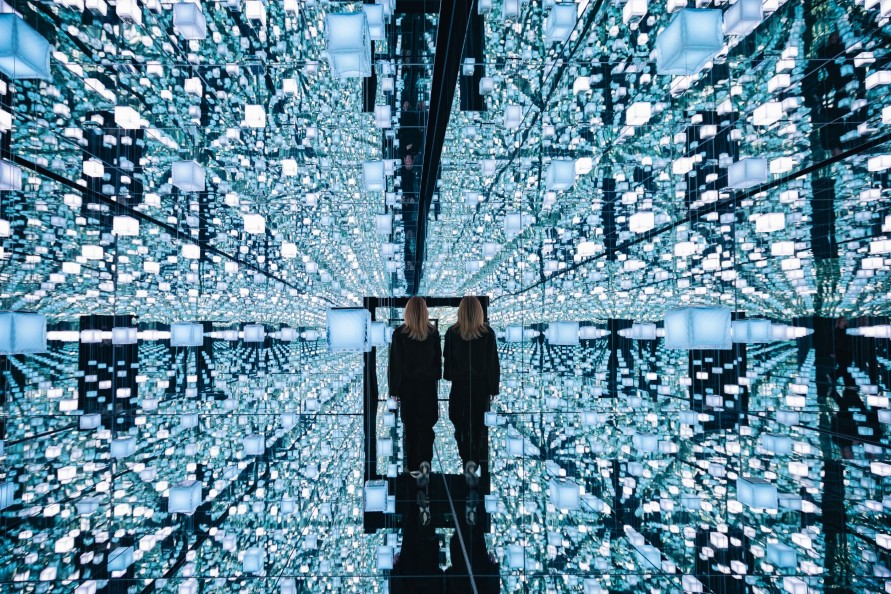
The world is turning, the centre cannot hold, and the people are tired of being told so. Not to be blasé about the state of things, but there is so much top-down content, telling it how it is, that reality itself resembles a matryoshka of rationalisations. Everything has an explanation and nothing makes sense. A picture might be worth a thousand words – but if both are now AI slop, designed by and for the algorithm, then what does any of it matter?
Such is the problem with English language media (an ironic statement to make, but bear with me). It doesn’t matter how moving and beautiful the latest David Attenborough documentary is, prognosticating and sternly warning, if it gets lost in the shuffle. Increasingly, it seems like there is a need for content with a new kind of language and of seeing, content that shifts our underlying perceptions and assumptions rather than asks us to accommodate them. Signal Festival, Prague, looks to challenge our notions of mass content – as well as the politics of a bureaucratic and traditionalist government.
Signal Festival: Transforming Prague’s old-world charm with art
Now in its 13th year, Signal Festival transforms the ancient, quaint centre of Prague with video mapping and light projection art. It is dazzling spectacle, public-as-performance art, and post-modern alchemical transformation all at once. Past, present and future collide with each other, cohering into something new and questioning the way we shape the urban geographies that sculpt us. Much like DESTE or the Marrakesh Biennale, it is the determined vision of a curator (and a small team) with the quietly revolutionary aim of transforming ‘old world’ urban locales into contemporary art destinations. The difference here is that the nature of both the art on display and the festival’s founder, the warm and unflinchingly honest Martin Pošta, makes the event more egalitarian and wholesomely chaotic.
This year’s theme was Solutions, the culmination of a tripartite series about the challenges in nature and in digital art. It also represents a significant milestone, with the opening of Signal Gallery to display these ephemeral artworks in a more sustained way. But what are those challenges, exactly, and what does light art and video mapping have to say (or, rather, illuminate) about them?
Prague’s core – the Staré Mesto and Nové Mesto – is slightly strange in that its architecture seems to elide history. Medieval and Gothic towers seamlessly blend with the Baroque and the Neoclassical. Much of that is to do with the uniform urban plan and building heights – viewed from Prague Castle, it becomes an almost anxiety-inducing totality, like hulking dominoes in perfect position for being toppled over. A little like Stefan Zweig’s pre-war world of security. Over four nights – from 7PM to 11PM – both the city centre and surrounding areas host projections and object installations on regular, repeating loops.
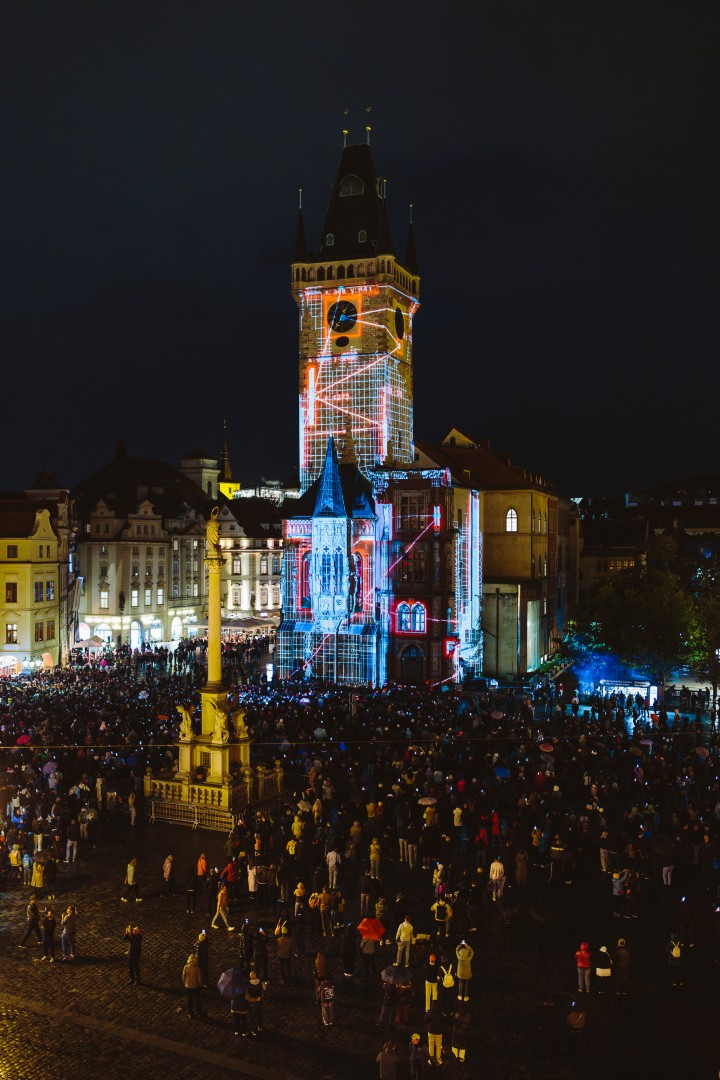
Artwork and adverts become shareable content for a digital-first audience
Normally, the old town hall gathers crowds for the astronomical clock and its cutesy (to modern eyes), mechanically animated figures. For Signal Festival, its tower became the canvas for mammasONica’s OVERLORD, the ironic source of online bemusement. What seemed like a blue screen of death error was the beginning of an exploration of our algorithm-obsessed world. Visual representations of data structures and virtual landscapes stream across the face of this latter day Tower of Babel. The crowd stands before this monument, enraptured by this testament to the attention economy. As we stood there, a thousand phones recording videos to post on social media, were we as much virtual participants as physical bystanders in the narrative of information saturation and collapse?
In the downtime between viewings, there is a series of tastefully produced adverts for the likes of Jack Daniels and Maybelline. Commercial interests are a necessity at such a massive, ongoing event; thanks to the efforts of production wing Signal Creative and other artistic collaborators, they are at least visually catchy. One of the most charming installations was Allwyn: Happiness, titled for the global lottery company of the same name. It was a simple set-up of large, rotating lenses and refracting through them overhead, multi-colored lights. Placed in the busy Republic Square, one could catch infinite, momentary variety glimpses into human expression and interior lives. The Radio Palace hosted the opening gala (and subsequent nights of after-parties) late in the evening, sponsored by glo™, where creatives and corporates mingled over cocktails. Speeches were given by Pošta, the minister for culture, and a representative of British American Tobacco. Seemingly strange bedfellows, perhaps, but it is a testament to the Signal team (of which there are only a dozen full-time staff) that they are able to invest these stakeholders in such a momentous project.
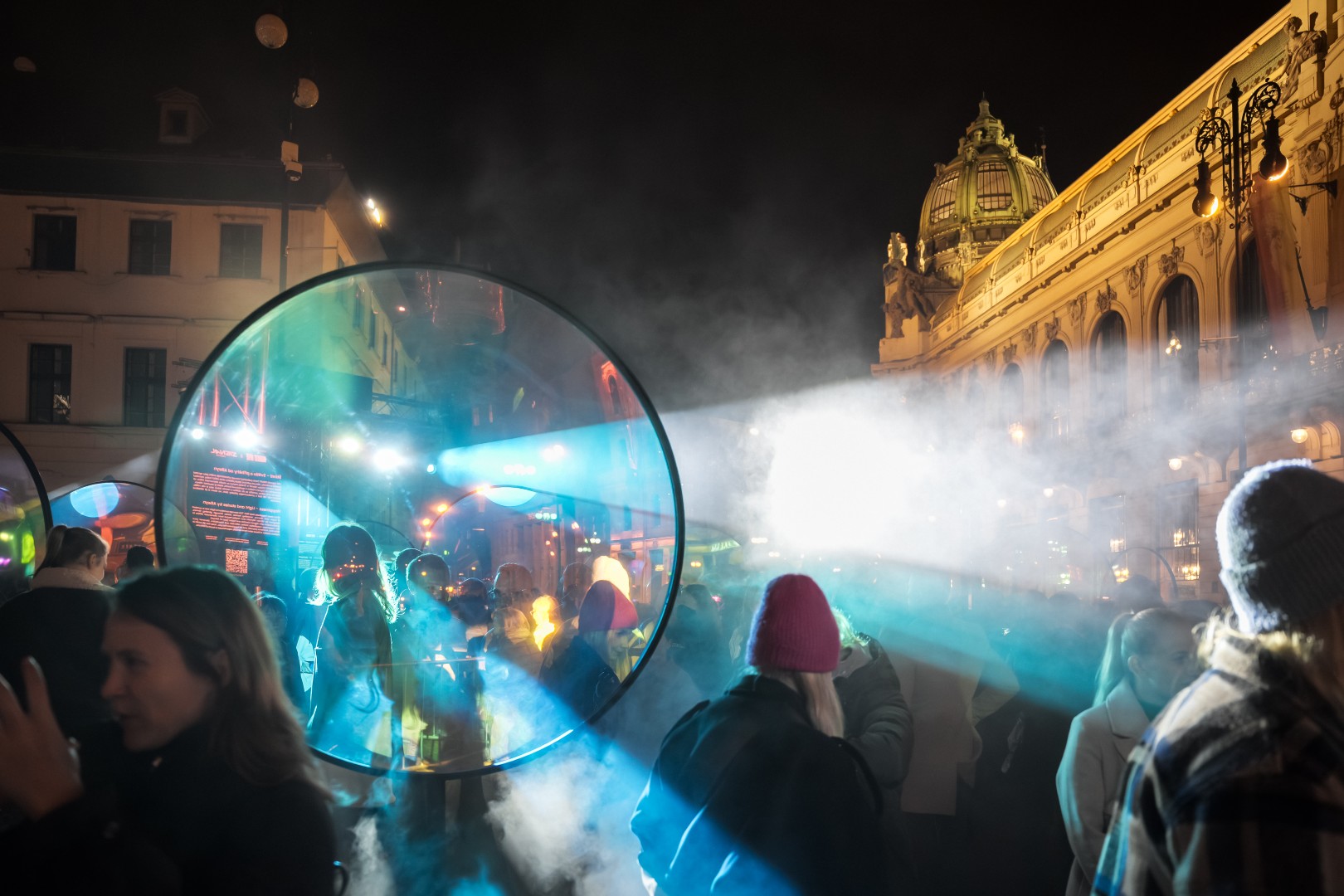
As Signal Festival’s curator might admit, many of the installations are art pieces disguised as content for mass consumption. In the Vinohrady district, V.P.M.’s ITERATIONS (The Infinite Rhythm of the City) took over the Basilica of St. Ludmila. In time to glitchy, frenetic beats, light courses along the sacred geometries, interspersed with flashes of futuristic facades. The latter in particular were so precisely aligned with the surface of the cathedral that the impression of a living, evolving organism was uncanny. Time and place were transported across cultures and worlds in the blink of an eye. Robert Siedel’s MLHA, set in the Baroque courtyard of Clam-Gallas Palace, combined fog machines and kaleidoscopic projection to render ordered, embodied space into something uncertain and potential.
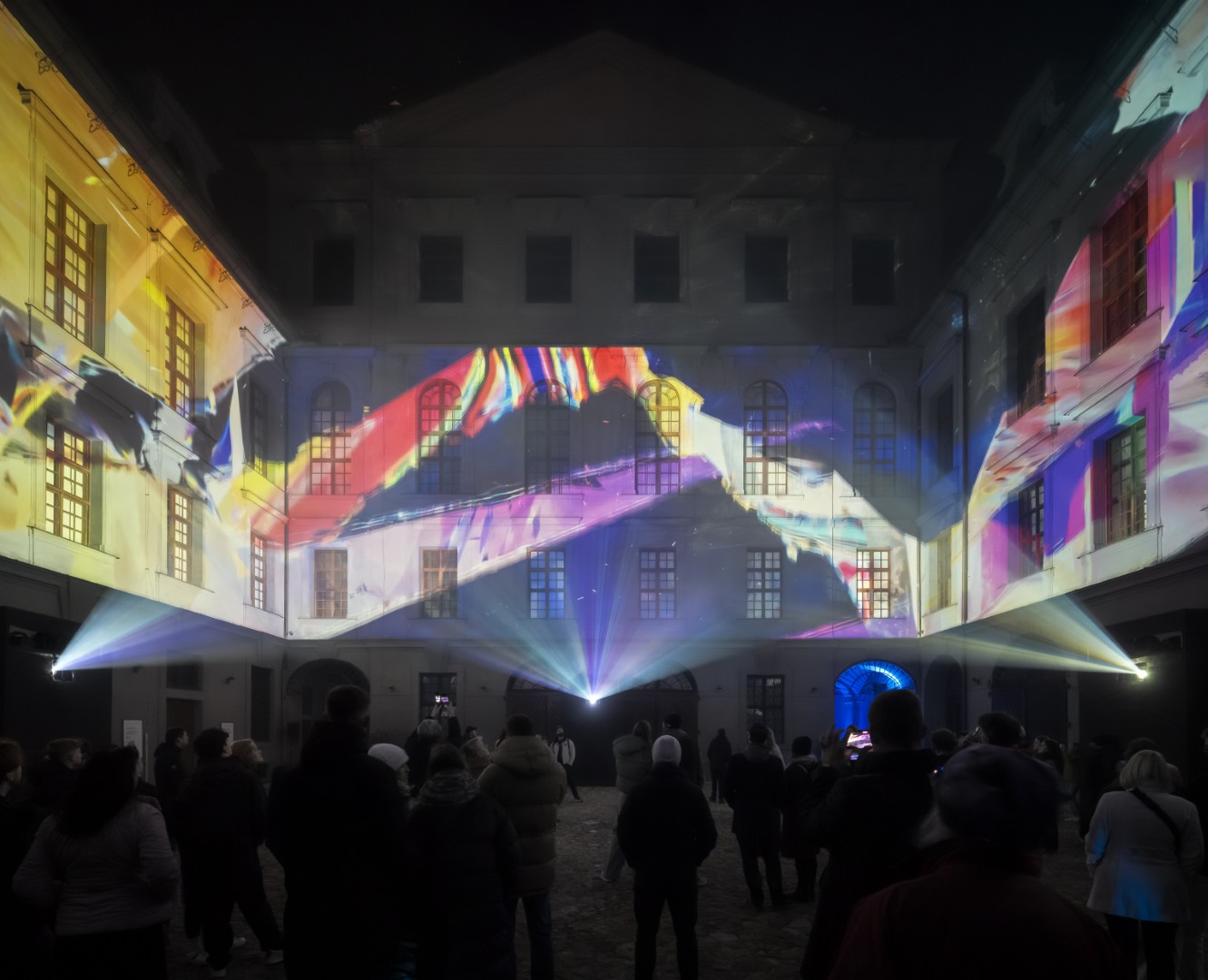
Seeking ‘Solutions’ through global community and innovative presentation
The installations on display were less like “solutions”, in the rational sense, and more like experiments in meaning and representation. On the 17th October, the Signal Forum offered a day of panels, lectures and discussions, split into two aspects. Solutions in Nature started with an overview of international conservation projects in the forest floodplains of central Europe, followed by a screening of the associated artistic project Confluence. The latter, a combination of field recording, drone footage and symbolic imagery, struck me as Tarkovsky-like in its resistance to definition and explicit message. Audio-visual artist Denisa Pubalová gave a fascinating talk on her work in the realms of the microscopic diatoms and human microbiome.
Solutions in Digital Art, the latter half of Signal Forum, seemed as much a pitch for professional networking and funding as it was the art itself. Nor did there seem to be any solution for the problem of maturation, and loss of novelty, in video-mapping. As Pošta quite bluntly said, when put to him in an interview:
“Even for us, it’s harder to find somebody or some artists that are going to present something new because falling bricks and spinning fucking towers you’ve seen so many times and it doesn’t impress us.”
Regardless, it was interesting to see the different approaches of creative studios took to developing and presenting their works. Speaking on behalf of mammasONica, Giancarla Trimarchiho compared Vonnegut’s famous ‘man in hole’ sketch – a graphic representation of the ideal narrative structure – to a waveform of light. For some reason this analogy sparked something in me. From a simple diagram (and inspiration) an artwork unfolds, and a single moment becomes a seven minute contemplation.
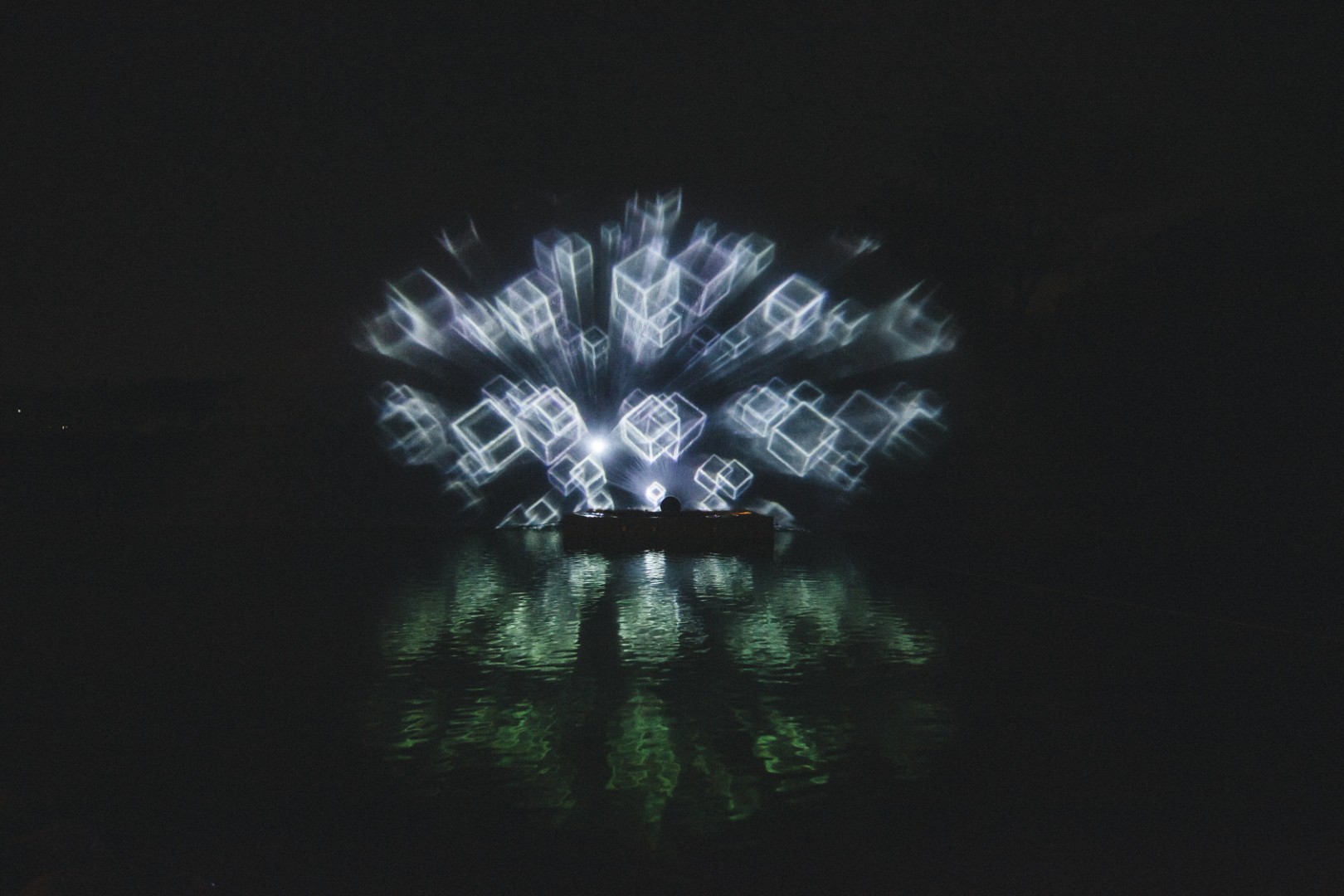
Perhaps the clearest representation of this (far better than mere words) was Tzolk’in Light by Taiwanese studio Peppercorns. In another first for Signal Festival, a barge on the river was the setting for this 3D projection, using mist as its medium. Geometries of seemingly solid light, cohere into swirling patterns and abstract forms. It is an after-image of creation and destruction in the split-second descent of every droplet of water. The same performance plays out on the surface of the river, like a science-class experiment in space-time distortion.
Signal Gallery: permanent location vs festival’s urban transience
The penultimate day of the festival included a press tour of the newly opened Signal Gallery. In his typically unorthodox, but entertaining fashion, Pošta described the financial and legal difficulties of converting this heritage building into a suitable home for digital art. Despite his protestations otherwise, the effort was very much worth it (for visitors, anyway). The current exhibition, Echoes of Tomorrow, crams ten visionary installations into this modest space.
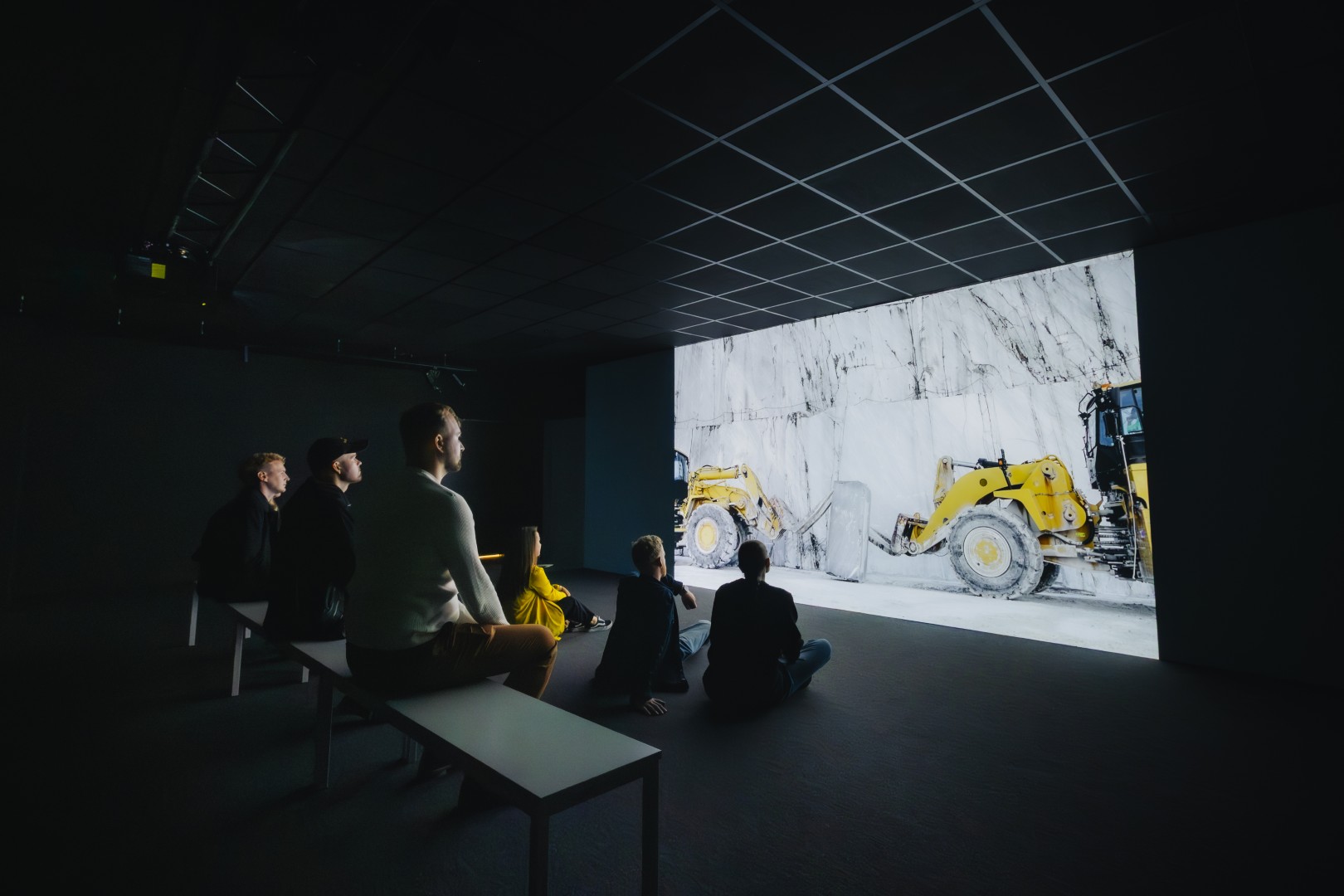

intangible #form by Shohei Fujimoto is an eerily arresting laser sculpture, a complex articulation of rhythm, movement and form through a simple configuration of strands of red light. The following room contains Preciosa Design Team’s Crystal Pixels: Silent Reflections, a mirror room of refracted light and fractal infinities. In the abstract short film Fighters, Quayola meditates on past and future through the process of marble mining, 3D design and sculpture by robotic arm. The accompanying music (‘Palestrina Sicut’), eerie and atmospheric, was written specifically for the piece by electronic composer and multidisciplinary artist Max Cooper.
Each year the festival moves around locations and faces new challenges – intentionally so, according to Pošta: “We pivot to different parts of the city because it makes us uncomfortable. It makes it more difficult, but it comes with unexpected outcomes.” Part of that may be political too – when it comes to the area around Prague Castle, from personal experience, it seems the government is more interested in hosting car rallies than art.
Regardless, the area around Vinohrady was a pleasant change to walk – full of parks and leaf-strewn avenues. Yet it does highlight the practical challenges of displaying installations which require consistent and power electricity. The works in this area were generally more smaller and simpler, though not necessarily worse for it. The most intriguing was EYE, a collaboration between Signal and Prusa Research, resembling a dystopian vision of AI control and domination.

An unexpected amazement was Josep Poblet’s work Lux Domus. In the underground Chapel of the Archbishop’s Grammar School, DIY candelabras and prisms are geometrically and precisely arranged. As the lights furled and unfurled like lotus petals, the ambient fog shifted between cool and impenetrable to halo orange. The effect was powerfully meditative, and I lost myself in reverie for an hour at a time. Space and memory shift with the colour of the light, and the amorphous space of the visible and the veiled.
But it was one of the final works that I saw, Dinner With a Hyperobject, that clarified my questions about the nature of the festival’s theme. Tadej Droljc’s intricate configuration of lights and prism within a giant drum, and the immaculate programming of those elements, aims to simulate an object beyond the confines of space and time. In the intricate dance of pulsing lights, I might have even seen it – was it in the will-o-the-wisps at the heart of the machine, or in the negative spaces between the colliding those threads? Was it in the warping shapes on the inner surface of the drum, or the snaking pattern across the roof of the Savarin Riding Hall? Or was it all these things, all at once, extending in all dimensions seen and unseen?

Conclusion: Signal Festival ‘s provocative approach reframes perceptions of Prague
As I exited the old town square, content with the last night of the festival, I noticed an eerie green glow on the cobblestones. Had I somehow missed out on an installation? Looking up I realised that it was the neon lights from one Thai massage parlour, the one inside the Rococo building with frescoes. For the first time I looked inside the open facade, into the tacky drapery, at those odd souls who would spend a night having a public body massage.
Did I come away understanding what the ‘Solutions’ – or even the questions – were exactly? No, but then that is besides the point. As Pošta opined:
“I don’t think that’s actually the mission of the art to say, ‘okay, this is how you do it.’ But it’s maybe more in a like, let’s get your attention through something interesting and maybe you develop it yourself in your own head after you leave the festival.”
More than just a colourful light show, each of the works at Signal Festival (in their own way) made me briefly reframe and connect my preconceptions and cognitive framework. It is these ephemeral epiphanies – these windows into ways of existence and thinking outside our own, without judgement or bias, – that is the hallmark of truly fantastic art. It’s also a breath of fresh air, and not just in the sense of exercising my legs. May next year’s edition be just as entertainingly enlightening.